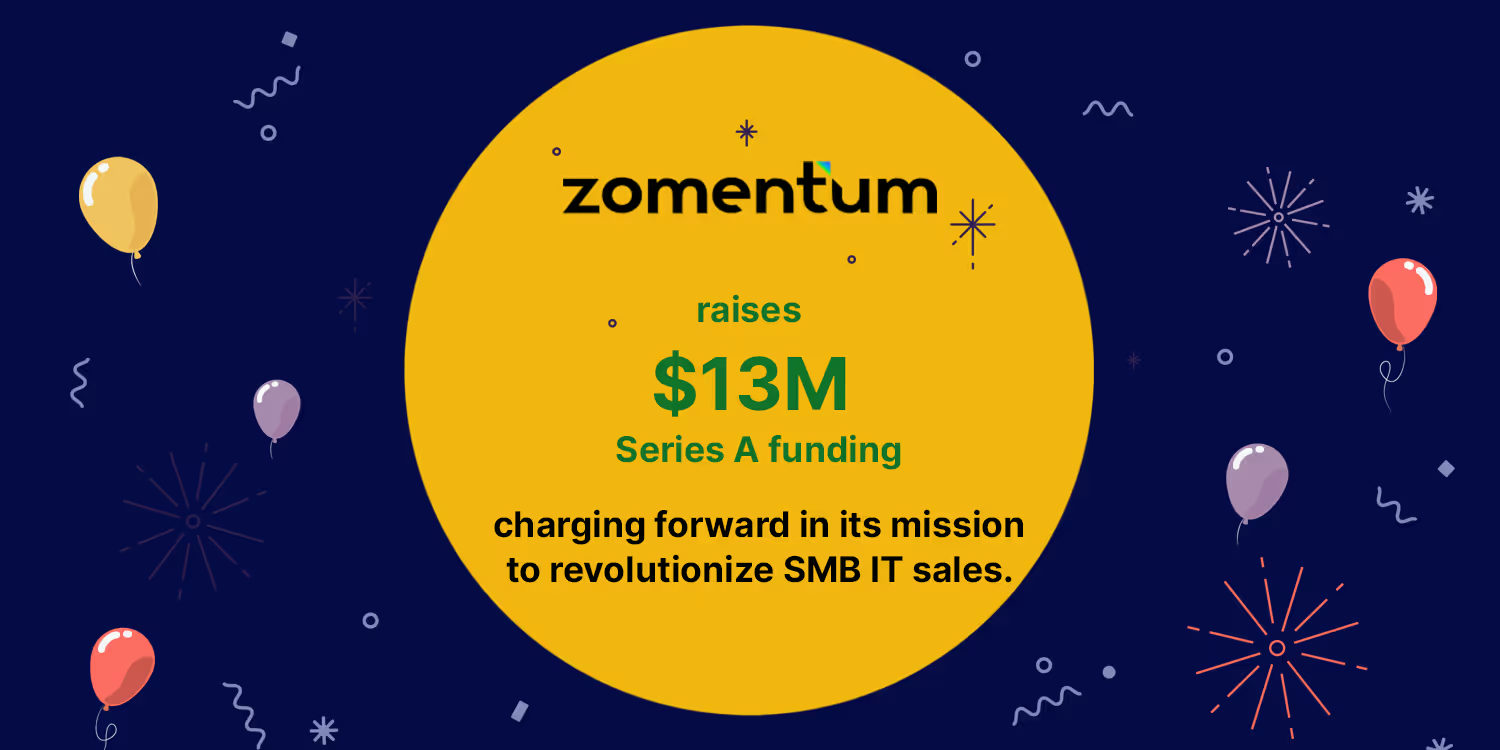12 Tips to Craft a Winning Proposal

Crafting a compelling proposal is an art, and these Proposal Tips from Zomentum are designed to help you master it. This comprehensive guide offers 12 practical tips to create winning proposals, from making a good first impression and understanding your customer's needs to tailoring your proposal and making a persuasive argument. Whether you're a seasoned professional or a novice, these tips will equip you with the knowledge to craft proposals that stand out from the competition and win your customer's approval.
Love them or hate them, a well-crafted sales proposal can be the difference between winning a deal and losing it. While some technology partners see them as fancy quotes that take a lot of time to create, sales proposals are one of the most powerful tools in a salesperson’s arsenal.
This post explores the basics of crafting a winning proposal, from understanding your customer's needs to making a persuasive argument. It also touches on common pitfalls to avoid and provides tips to ensure your proposal stands out from the competition.
What a Sales Proposal Is
At its core, a sales proposal is a document that outlines the terms of a potential deal between customer and supplier. It’s an offer from the supplier to provide goods or services to the customer in exchange for money. Sales proposals can be used in any industry, but they’re particularly common in sales environments where deals are closed through negotiation.
Why Sales Proposals Are Important
Sales proposals are important because they enable suppliers to pitch their products or services to customers in a concise, well-organized manner. This approach makes it easier for customers to understand what’s included in an offer. It also gives them a point of reference to discuss the proposal with their colleagues or superiors.
Sales teams also use proposals as a tool to measure progress during the sales process. For example, a supplier can use a proposal to track the number of deals that they’ve won or lost over a given time.
12 Tips to Craft a Winning Sales Proposal
There’s no one-size-fits-all answer to how you should craft a winning sales proposal. The success of a sales proposal depends on many factors, including the industry, the product or service being offered, and the customer’s needs. To help you create a proposal that stands out from the competition and wins deals, follow these 12 tips.
1. Make a Good First Impression
Your proposal is your opportunity to make a good first impression on the customer, so make sure it looks professional and well-organized. Use proper grammar and spelling, and be concise with your wording. Also include charts and graphs to illustrate your points, and ensure the information is easy to find using headings and subheadings.
2. Understand Your Customer’s Needs
Before you create a proposal, understand your customer’s needs and wants. Do your homework and research the customer’s industry, competitors, and business goals. Ask a lot of questions, and get to know the customer as well as possible. Only then can you start crafting a proposal that meets their specific needs.
3. Tailor Your Proposal to the Customer
One of the suppliers' biggest mistakes is using a one-size-fits-all approach in their proposals. This approach doesn’t work because each customer is unique and has different needs. Instead, research the customer’s industry, competitors, and goals. Then, tailor the proposal to meet your customer’s specific needs.
4. Make a Persuasive Argument
A good proposal isn’t just a list of products or services; it’s a well-crafted argument that sells the benefits of doing business with the supplier. Highlight the features and advantages of your product or service, and emphasize how they can help your customer meet their goals. Be realistic about what you can offer, and avoid over-promising features.
5. Stand Out From the Competition
You must make your proposal stand out from the crowd in a competitive market. Use a creative format that includes visual elements like graphs and charts, and highlight the unique benefits of your product or service. Also, tailor your proposal to the specific customer rather than using a one-size-fits-all approach.
6. Stay Organized
A well-organized proposal is easier to read and understand, making it more likely to win a customer’s approval. Make your proposal easy to navigate, and use headings and subheadings to break up the text into manageable chunks. Include a table of contents, so your customer can quickly find the information they need.
7. Be Professional
A sales proposal is a formal document, so present it professionally. Use proper grammar and spelling, and avoid informal language or slang terms. Be concise and avoid overly technical statements. After all, your customer is likely looking for key information about your product or service, not a long-winded explanation of every detail.
8. Follow Up After Sending
After your send, your proposal to the customer, follow up with them to answer any questions and gather feedback on your proposal. This added touch demonstrates your interest in doing business with them and enables you to address any objections they might have.
9. Be Patient
It can take time to win a customer’s business, so don’t be discouraged if they don’t reply to your proposal right away. Be patient and keep following up until you get a response.
10. Stay Positive
A positive attitude is essential in any business transaction, especially when trying to win a customer’s business. Keep a positive tone of voice, and be friendly and polite to the customer.
11. Follow Up after Closing
Follow up with them after you win the customer’s business and close the sale. This way, you can ensure they’re happy with your product or service. Plus, you can get feedback on your performance.
12. Ask for Referrals
When you’ve built a good relationship with the customer, ask them for a referral. Referrals can help you expand your business and reach new customers.
Craft Winning Proposals of Your Own
To win a customer’s business, craft a well-written proposal highlighting the benefits of doing business with you. By following these tips, you’ll be able to create a proposal that stands out from the competition and wins your customer’s approval.
Suggested Blogs

What’s new in Zomentum - December 2019
.avif)
Zomentum Announces the Top Influential Partners of 2023: Leading the Way in Growth and Innovation

